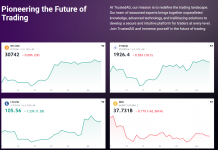In the constantly changing world of cryptocurrency trading, experienced investors have developed diverse strategies to take advantage of market volatility. One approach is “scalping” through high-frequency trading. “Scalping” involves making numerous small trades in quick succession to profit from tiny price fluctuations, while “high-frequency trading” uses automated algorithms to efficiently execute trades.
Used together, these are effective approaches to manoeuvring the dynamic cryptocurrency market. This article assesses the application of scalping in cryptocurrencies – recent Solana price movements are utilised to provide context and illustrate the intricacies of scalping in the cryptocurrency market.
Understanding scalping and high-frequency trading
Scalping in trading involves making rapid trades to profit from small price movements. Investors aim to capitalise on short-term price fluctuations by quickly entering and exiting positions rapidly, rather than holding onto assets for extended periods.
High-frequency trading takes this concept further y leveraging advanced algorithms to execute multiple trades with speed and precision. These algorithms analyse market data, identify patterns, and react swiftly to execute trades in microseconds. The goal is to make a significant number of small gains that are cumulatively profitable.
The fast-paced nature of the market
In the volatile and highly liquid cryptocurrency market, scalping has found fertile ground for implementation. Cryptocurrencies like Solana (SOL) are known for their price fluctuations that can occur within minutes (or even seconds).
Scalpers thrive in such an environment, aiming to capture short-lived price movements for quick profits. For instance, Solana’s volatility in 2021 had currency jumping from $160 to $180 in 15 minutes. Scalpers seek to capitalise on these price swings, executing multiple trades to profit from temporary price surges.
Benefits and risks of scalping cryptocurrencies
Scalping strategy is not reliant on market trends or long-term asset appreciation, making it less susceptible to market sentiment overall. Scalpers can profit from both rising and falling prices, providing opportunities in any market condition. Additionally, rapid trade execution allows for immediate cash generation and reduced exposure to market risks over extended holding periods.
However, scalping has inherent risks; its fast-paced nature demands quick decision-making and precise execution – traders must have a robust understanding of technical analysis with critical market timing. Furthermore, transaction costs can significantly impact profits when making numerous trades with small margins.
Insights into future trends and regulatory changes
As cryptocurrency markets continue their maturation, regulatory bodies worldwide are scrutinising the realm of high-frequency trading. There are growing concerns that revolve around market manipulation, price manipulation, and potential ramifications for retail investors.
These concerns have triggered discussions surrounding the need for stricter regulations – it is advised that both traders and investors maintain close vigilance over forthcoming regulatory changes that may affect scalping strategies.




![Mayrsson TG Reviews: Why Choose Crypto-Trading with Them? [mayrssontg.com]](https://comparic.com/wp-content/uploads/2023/12/image1-218x150.jpg)













